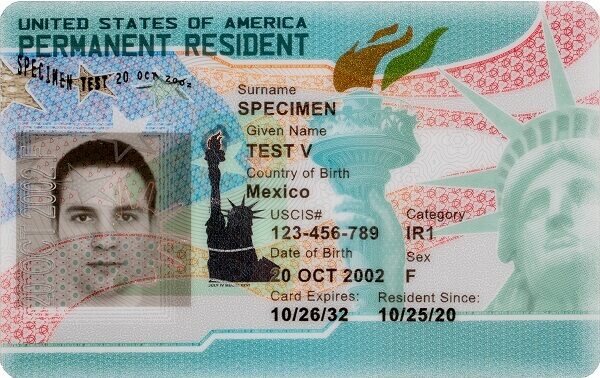Obtaining a U.S. Green Card, which grants you permanent residency in the United States, can be a complex process. Moreover, there are several different ways to obtain a Green Card, and the eligibility criteria can vary based on factors such as family relationships, employment, and special circumstances. Actually, the process of obtaining a green card in the United States can vary depending on your individual circumstances, such as your eligibility category and your country of origin. Technically, there is no single fastest way to get green card, as processing times can be influenced by various factors. However, here are some common pathways to obtaining a green card and factors that can affect the timeline.

Family based Immigration
Family-based immigration is one of the primary ways to obtain a green card (lawful permanent residency) in the United States. Primarily, this process allows U.S. citizens and lawful permanent residents (LPRs) to sponsor certain family members for green cards. However, the family-based immigration system is divided into two main categories:
Immediate Relatives of U.S. Citizens
There are no numerical limits on the green cards available in this category, making it one of the faster ways to obtain a green card. Immediate relatives include the following:
- Spouses of U.S. citizens
- Unmarried children under 21 of U.S. citizens
- Parents of U.S. citizens (if the sponsoring citizen is at least 21 years old)
Family Preference Categories
Although, this category includes more distant family members of U.S. citizens and certain family members of lawful permanent residents. However, there are numerical limits on green cards available in this category, and there are several preference categories:
- First Preference (F1): Unmarried adult children (21 years or older) of U.S. citizens.
- Second Preference (F2):
- F2A: Spouses and unmarried children (under 21) of LPRs.
- F2B: Unmarried adult children (21 years or older) of LPRs.
- Third Preference (F3): Married adult children of U.S. citizens.
- Fourth Preference (F4): Siblings of adult U.S. citizens.
Employment-Based
Employment-based immigration is another common pathway to obtaining a green card in the United States for individuals who have a qualifying job offer or meet certain criteria. Additionally, the employment-based green card process is divided into several preference categories, each with its own eligibility criteria and numerical limitations. Here’s an overview of the main employment-based green card categories:
1. EB-1 (Employment-Based First Preference): The EB-1 visa informally known as “Einstein visa”, is a category of immigrant visa in the United States that is designed for individuals who have demonstrated extraordinary ability or achievement in their respective fields. This visa category is available to individuals who are exceptionally skilled or accomplished in areas such as science, arts, education, business, or athletics. While it’s not officially called the “Einstein visa,” it has been associated with individuals like Albert Einstein, who was a renowned physicist. This category is for priority workers and includes three subcategories:
- EB-1A: Individuals with extraordinary ability in the sciences, arts, education, business, or athletics.
- EB-1B: Outstanding professors and researchers.
- EB-1C: Multinational managers and executives.
2. EB-2 (Employment-Based Second Preference): This category is for individuals with advanced degrees or exceptional ability. It includes:
- EB-2A: Members of professions holding advanced degrees or exceptional ability.
- EB-2B: National Interest Waiver (NIW): Individuals with an advanced degree or exceptional ability whose work is in the national interest of the United States.
- EB-3 (Employment-Based Third Preference): This category is for skilled workers, professionals, and other workers. It includes:
- EB-3A: Skilled workers (requiring at least two years of job-related experience).
- EB-3B: Professionals with bachelor’s degrees.
- EB-3C: Other workers in positions that do not require skilled or professional qualifications.
- EB-4 (Employment-Based Fourth Preference): Special Immigrants, which includes certain religious workers, employees of U.S. foreign service posts, and others.
- EB-5 (Employment-Based Fifth Preference): Immigrant Investors. This category allows foreign investors to obtain a green card by investing a certain amount of capital in a new commercial enterprise that creates jobs for U.S. workers.
The Diversity Visa (DV) Lottery
The Diversity Visa (DV) Lottery, also known as the Diversity Visa Program or Green Card Lottery, is a U.S. government program that provides a limited number of immigrant visas each year to individuals from countries with low rates of immigration to the United States. The primary purpose of the DV Lottery is to promote diversity in the immigrant population of the United States by offering a pathway to legal permanent residency for individuals from underrepresented countries. Mostly countries like Afghanistan, Nepal, Qatar, etc. So, if you reside in these countries then you will get lottery every year and you can give your name in this lottery. And if you your name is in the draw then within few months you will receive green card and you can move with your entire family.
Investor Visa (EB-5)
The EB-5 Immigrant Investor Program allows individuals to obtain a Green Card by making a significant investment in a new commercial enterprise that creates jobs in the U.S. The required minimum investment amount may vary depending on the location of the enterprise:
- 1.8 million for standard investments
- $900,000 for investments in a targeted employment area (TEA), which includes rural areas or areas with high unemployment.
Jail breaking iPhone 15. Click here to know more.n

